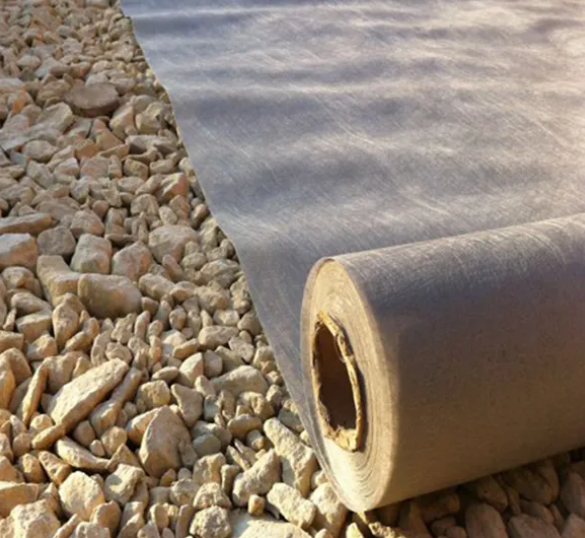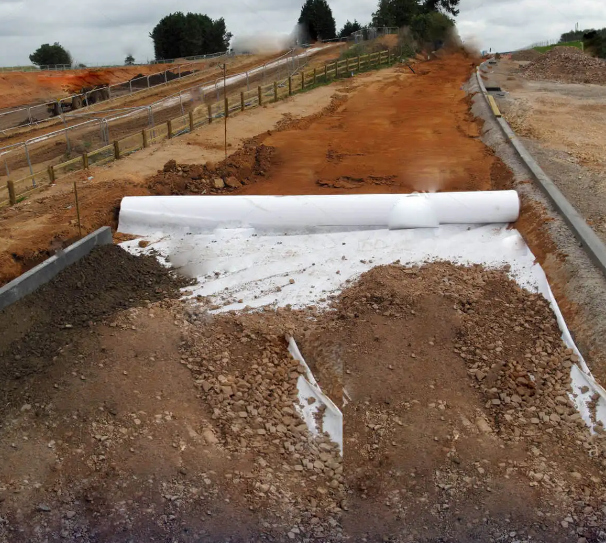- Understanding the Role of Geomembrane Liners in Waste Management
- Innovations in Geomembrane Liners for Water Management
- Geomembrane Liners: A Comprehensive Guide
- The Future of Geomembrane Liners in Civil Engineering
- Geomembrane Liners: Enhancing Landfill Stability
Manager:Alvin Wang
WhatsApp:+62 8983806051
Tel:+86 10-5797-1075
Email:steelwang@okorder.com
Address:3rd Floor, No.2 Building, No.1 Sanlihe Road
What type of fabric is geotextile?
Geotextiles play a critical role in modern construction and environmental projects; they perform different functions which include separation, filtration, reinforcement, protection, and drainage. It is important to know about this kind of fabric that is geotextile, its characteristics, applications and innovative ideas behind it to professional like builders, gardeners and environmentalists. The article examines the types of fabrics utilized in making geotextiles their nature characteristics, advantages and other areas they can be applied.

Understanding Geotextiles
Definition and Purpose
Geotextiles are permeable synthetic fabrics designed to improve soil behavior enhance structural support as well as provide filtration in civil engineering projects. They are commonly used together with soil, rock or other materials to solve specific problems in various branches of engineering.
Historical Background
The use of geotextiles spans over several decades since their inception as solutions for soil erosion problems as well as road construction improvement. Since then these products have become wider in scope with advances made on the same through material science leading to greatly enhanced performance levels.
types of geotextile Fabrics
woven geotextiles
These are woven from synthetic yarns thus producing a fabric that has a high tensile strength hence are less prone to distortions. Primarily these geotextiles help in ground stabilization, separation purposes apart from load transfer purposes.
- Materials Used: Mainly made out of polypropylene or polyester because they possess maximum resistance against degradation caused by exposure to natural elements.
- Characteristics: Have low elongation values besides having high tensile force that translates into outstanding load distribution capabilities.
Non-Woven Geotextiles
They are non-woven due to bonding together of fibers either mechanically or chemically such processes. Their special quality lies in being excellent filters plus good draining mediums.
- Materials Used: Normally produced from polypropylene, polyester or both.
- Characteristics: These fabrics have a high level of porosity, facilitate good separation of solids and are flexible.
Knitted Geotextiles
These are knitted geotextiles which are less common but they have a great deal of stretching ability and flexibility because it is fabricated by looping threads together. The use of these geotextiles comes in whenever we need flexible materials that can be stretched out.
- Materials Used: Usually made from polypropylene or polyester.
- Characteristics: Excellent stiffness, tensile elongation and moderate strength.
Manufacturing Processes
Weaving
This process creates an interlaced yarn fabric that has an open-grid structure. In this case, it is very suitable for the applications like reinforcement as well as separation where high tensile strength is required.
Needle Punching
Fabricating needle-punched non-woven geotextiles involves mechanically entangling fibers using barbed needles. This gives the fabric better filtration and drainage characteristics ideal for civil engineering projects.
Heat Bonding
In the production of heat-bonded non-woven geotextiles, thermoplastic fibers are subjected to heat to make them bond at their points of contacts. Consequently for such cloth manufacturing method there exists a strong fabric whose properties include effective filtration plus good separation abilities within its applications domain.
Chemical Bonding
Chemical bonding describes the process whereby fibers are glued together using adhesives. This approach allows for customization of fabrics so as to give them more durability or enhance their filtering capacity depending on intended use purpose.
Key Properties of Geotextile Fabrics
Tensile Strength
The tensile strength must be high enough to enable a fabric survive under extreme pressure conditions without breaking into pieces especially when dealing with woven geotextiles which come with great tensile force making them useful in load distribution and reinforcement activities among others.
Permeability
Non-woven geotextiles are designed to allow water through them without being obstructed by soil particles. They are good for filtering purposes and drain off excess water from the system while still preventing soils particles from entering into the drainage system inadequately.
Durability covers mechanical damage resistance, environmental decay, and also chemical exposure. Durability of geotextiles made from polypropylene and polyester is high and can effectively last for a long term.
Geotextile Fabrics Applications
Road Construction
In road construction, geotextiles are used for separation, stabilization, and drainage purposes. Placing them between soil layers prevents intermixing, enhances load distribution and extends the life of the road structure.
Erosion Control
To avoid erosion by water and wind in many applications such as coastal protection, slope stabilization and riverbank reinforcement is where these geotextiles play their role of stabilizing the soil.
Increased technology in production methods such as nanotechnology and three-dimensional printing have caused the development of geotextiles with improved properties. More accurate control over fabric characteristics is thus made possible by these techniques, thereby enhancing performance.
Case Studies & Field Applications
Road Stabilization Projects
Several successful road stabilization projects have used geotextiles to increase the durability of roads while reducing maintenance costs. These projects demonstrate how well geotextiles can manage load distribution and prevent soil mixing.
Coastal Erosion Control
In coastal erosion control, geotextiles are utilized to protect shorelines against land loss. The fabric’s resistance to environmental factors like harsh weather conditions which makes it serve for a longer term is very evident through these applications.
Landfill Management
The prevention of leachate contamination and the reinforcement of liner systems in landfills are among landfill management tasks that rely on geotextiles. Examples prove their efficacy in maintaining environmental safety.
Agricultural Improvements
In agriculture, use of geotextiles has been shown to improve soil fertility, fight weeds and maintain moisture levels. These examples show how versatile they are and why they are beneficial to most agricultural practices.
Future Directions
Improved Durability
Future developments in geotextile fabrics will be geared towards enhancing durability especially under adverse environmental conditions. Such advances will be driven by new materials researches plus protective coatings.
Enhanced Functionality
When multifunctional attributes like filtration combined with reinforcement is integrated into them, then gosystems become useful for many purposes. As material science evolves new types of fabrics which can satisfy different needs from one project will emerge.
Global Adoption
Over time there has been a rise on awareness on the benefits offered by geo-textile hence resulting into increased adoption in engineering and environment related global projects. This trend will be supported by efforts aimed at standardizing quality as well as performance metrics.

Conclusion
Modern engineering and environmental management cannot do without geotextiles. Woven, non-woven and knitted fabrics, each with their unique properties for specific end uses are among a few types of them, thus making them versatile. Thus to make this possible it is important to understand the characteristics, benefits and also challenges faced by geotextile fabrics on their usage in various types of projects. As such, advanced and sustainable geotextiles continue being developed because of innovations while increasing project performance and protecting environment.






